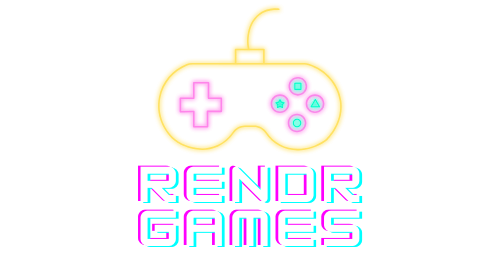Certainly not with randos, but that’s been the case since the late-’00s. The novelty wore off and the barrage of abuse and slurs from tweens and people old enough to know better had driven most sane gamers into the Settings for the ‘Mute All’ option.
Nintendo, naturally, will be taking the ‘walled garden’ approach with GameChat, but the fact is that voice chat is old. And to many viewers, highlighting it so prominently in the Switch 2 reveal made Nintendo feel about 20 years behind the times, trying once again to get us jazzed because they’ve integrated Wii Speak at the system level. Remember Wii Speak? It worked with a handful of Wii games, most notably Animal Crossing: City Folk, but on the whole, players just weren’t very enthusiastic about it.
In 2008.
16-and-a-half years ago.
Everyone has moved on. In a world where Skype shut down just last week, ‘Hey, look at this brand-new nifty chat feature!’ came across as a distraction tactic from a company that’s (sensibly) stuck to the same basic template of its previous console. That’s not to say that the video element isn’t interesting in a ‘Oo, look – Nintendo’s doing a Kinect-y, EyeToy thing!’ way, but likewise, it feels like an extremely late-coming take on a concept which had its day many years ago. The gameplay feeds having a frame rate in the I-can-count-it range didn’t help sell the concept to the ‘core crowd, either.

And yet! There’s an element of naivety in touting GameChat as a GameChanger which makes you wonder, ‘Hang on, am I missing something? Are they actually onto something here?’ And for certain demographics, maybe they are.
As a Nintendo lifer, it’s a constant struggle to stand back and see that blue ocean perspective, to remember the huge audience Nintendo attracts who aren’t die-hard fanatics pining for a new F-Zero. Well-adjusted individuals who don’t measure console generations by the number of stitches rendered in Mario’s dungarees. For some Switch owners — people who weren’t around during the birth of online gaming, for whatever reason — this simple injection of audio and video chat into their games will feel fresh.
For young kids looking to connect with friends, maybe this fun, safe solution will be a boon. Not having to have your phone on the couch beside you is an advantage I can get behind as someone who hates worrying about mobile battery or splitting attention across multiple devices (which makes the Zelda Notes app with the upcoming NS2 Editions of BOTW and TOTK a minor irritation, but that’s another article).
And who knows – perhaps older players who never wore a headset in the deathmatch days will find it novel to connect a camera to the console directly via a clunky cable that sticks out the top. However ungainly it looks (despite Nintendo’s attempts to make those cables look all neat and tidy in the videos and PR pics), there is a comfort in knowing that the camera isn’t idly recording you when you’re playing Zelda in your smalls. You know, as you do.
NCL president Shuntaro Furukawa recently commented that Nintendo “developed GameChat with the goal of recreating that childhood experience of kids getting together with their gaming systems, but in the modern environment,” hoping that it “inspires consumers to play games in new ways that we never imagined.”
Speaking in one of Nintendo’s Ask the Developer interviews, Sumikazu Ono, the engineer overseeing Switch 2’s built-in features, said that Switch 2 producer Kouichi Kawamoto suggested the idea of a student lounge as a basis for the “care-free and comfortable space we’re hoping to achieve”:
“…we wanted to create a space where people would naturally gather, whether it’s to play the same game together, or different games, or even just to watch. The team proposed that such a space would create a whole new way to voice chat, unlike Nintendo’s previous voice chats.”
Another detail in part two acknowledges the potential appeal to younger players. “It’s just a video chat with friends,” says Ono, “but the way it’s presented makes it look like YouTubers streaming their gameplay. I reckon it would be fun for friends to play together as if they’re livestreamers.”
Letting kids live out their YouTuber aspirations with their pals seems to have been a conscious choice, although Ono contradicts himself in part three: “We mentioned earlier how GameChat can be made to resemble a gaming live stream, but at the same time, it’s not a live-streaming tool, so we consciously avoided giving that impression.”
With its obvious, lockdown-induced focus on socialising, Nintendo is framing GameChat as really just a place to hang out, then. Hearing the team discuss it, the ‘Game’ part almost feels peripheral. Perhaps the name could have used some workshopping?
You could make that argument for most of these new Nintendo services. Want to lend your games out, sharing them with friends and family? GameShare… is not the service you’re looking for – try Virtual Game Cards. GameShare is specifically for when you want to play multiplayer with pals with just one copy of a game. You can also GameShare via GameChat, apparently.
It’s not incomprehensively complicated, but there’s needless overlap with the terminology – certainly for a company that’s championing ease of use above all else. People probably shouldn’t have to look up a FAQ for this stuff.

Anyhow, despite our reservations and low levels of enthusiasm until now, we’re still keen to see how smoothly GameChat functions in the real world. Could it turn out to be a low-key win that slides effortlessly into our gaming lives as simply and easily as Switch itself did back in 2017? Perhaps firing up Discord will suddenly feel clunky compared to Nintendo’s integrated solution. It is possible!
Let us know your thoughts in the polls below.

